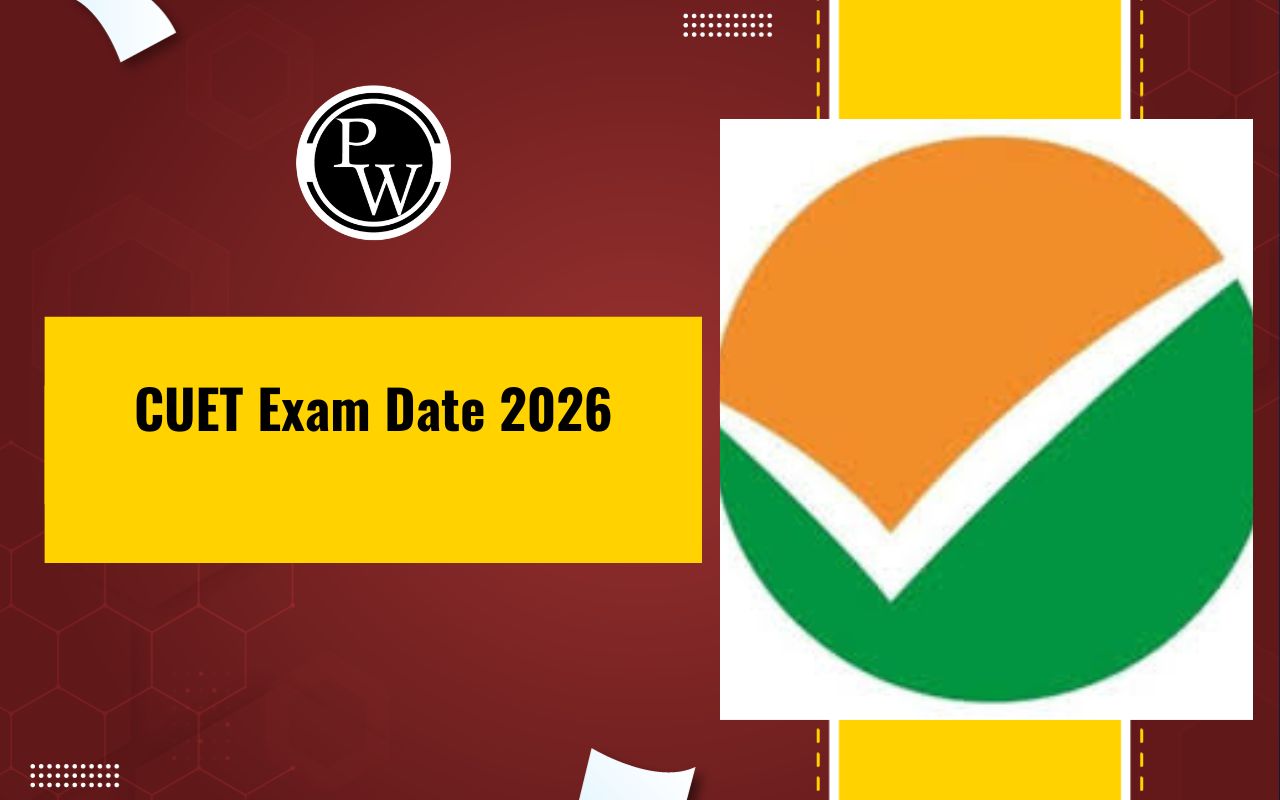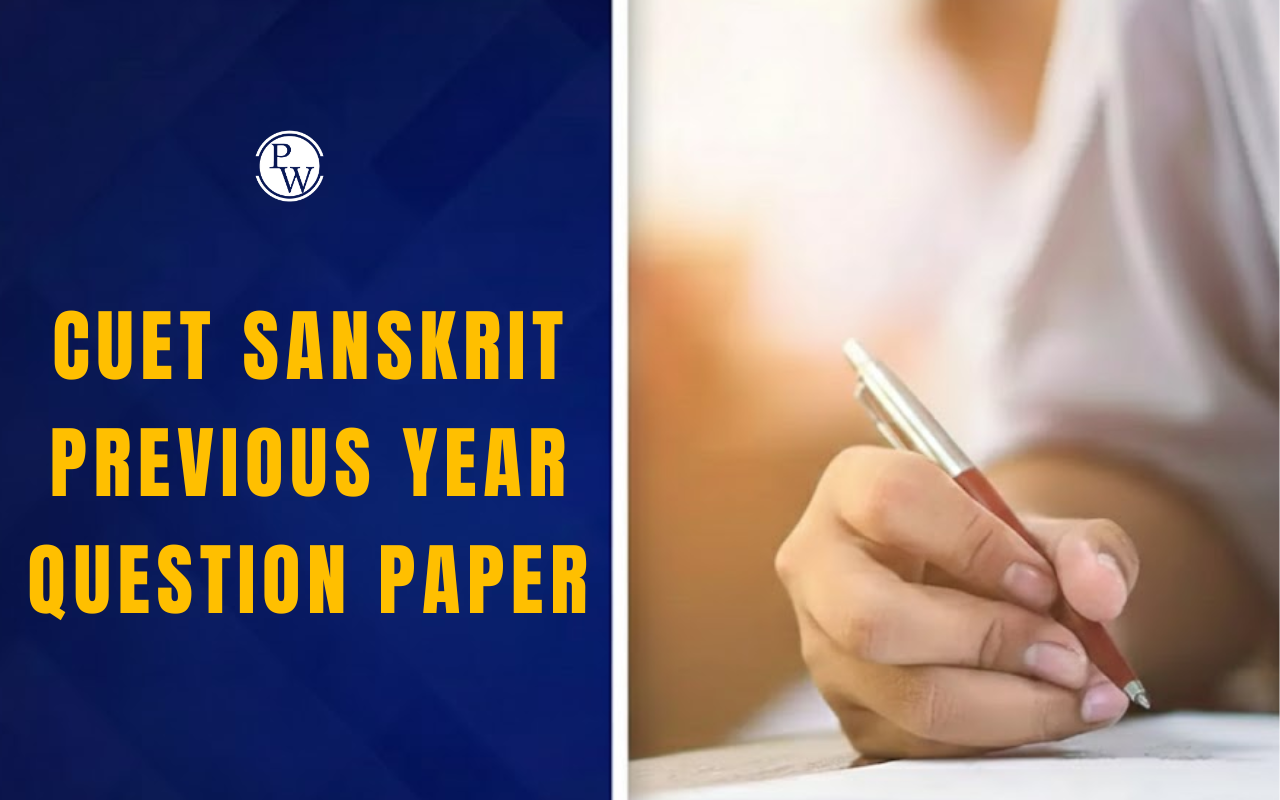
CUET Exam Pattern 2026 for UG has been designed by the National Testing Agency (NTA) to provide a standardized admission process for undergraduate courses across central and other participating universities in India. The exam will be conducted in Computer-Based Test (CBT) mode and is divided into three sections—Languages (Section I), Domain-Specific Subjects (Section II), and General Test (Section III). Each section will consist of 50 multiple-choice questions (MCQs), with +5 marks for every correct answer and -1 for each incorrect one. Students can choose up to two language papers, five domain subjects, and an optional general test, depending on their course and university requirements. The questions in CUET domain subjects are based on the NCERT Class 12 syllabus, and the total exam duration varies based on the number of subjects selected. This structured and flexible CUET 2026 paper pattern ensures a fair and diverse evaluation of students from different academic backgrounds.
CUET 2026 Exam Pattern Overview
CUET UG 2026 exam pattern provides a clear structure for candidates preparing for undergraduate admissions through the Common University Entrance Test.
|
CUET 2026 Exam Pattern Overview |
|
|
Particulars |
Details |
|
Mode of Examination |
Computer-Based Test (CBT) |
|
Type of Questions |
Multiple Choice Questions (MCQs) |
|
Number of Slots |
Three to four |
|
Exam Timing |
As per CUET 2026 date sheet |
|
Sections in Exam |
Section 1 - Language Section 2 - Domain Subject Section 3 - General Aptitude Test |
|
Total Questions per Subject |
50 questions |
|
Marking Scheme |
+5 for each correct answer -1 for each incorrect answer |
|
Negative Marking |
Yes |
|
Medium of Exam |
13 languages: English, Hindi, Assamese, Bengali, Gujarati, Kannada, Malayalam, Marathi, Odia, Punjabi, Tamil, Telugu, Urdu |
|
Number of Domain Subjects |
23 |
CUET 2026 Exam Pattern Section Wise
CUET UG 2026 exam is divided into three main sections, each testing different skill sets. The table below summarizes the number of questions, duration, and the types of questions for each section.
|
CUET 2026 Exam Pattern Section Wise |
|||
|
Section |
Number of Questions |
Duration |
Question Types & Details |
|
Section IA – Language |
50 |
60 minutes (total) |
Reading comprehension passages (factual, literary, narrative), literary aptitude, and vocabulary-based MCQs. |
|
Section II – Domain Specific |
50 |
45 minutes per subject |
MCQs based on NCERT Class 12 syllabus, often with input text to answer questions related to the subject. |
|
Section III – General Test |
50 |
60 minutes |
Questions on general knowledge, current affairs, mental ability, quantitative reasoning (up to Class 8 level), and logical reasoning. |
CUET UG Marking Scheme 2026
The total marks for the CUET exam are 250. The marking scheme as per the National Testing Agency (NTA) is as follows:
CUET UG Marking Scheme 2026 |
|
|
Response Type |
Marks Awarded |
|
Correct answer or most appropriate option |
+5 marks |
|
Incorrect answer |
-1 mark |
|
Unanswered or marked for review |
0 marks |
|
More than one correct option (if applicable) |
+5 marks for selecting any correct option |
|
All options correct (if applicable) |
+5 marks to all who attempted |
|
Question dropped or found wrong |
+5 marks to all who attempted |
CUET Exam Pattern 2026 Section-wise Details
CUET UG 2026 exam is divided into three main sections: Languages, Domain-Specific Subjects, and the General Aptitude Test. Each section tests different skills and knowledge areas, allowing candidates to choose subjects based on their academic background and course preferences. Below is a detailed look at each section of the exam pattern.
Section 1 – Languages:
Candidates can choose from the following 13 languages:
Tamil, Telugu, Kannada, Malayalam, Marathi, Gujarati, Odia, Bengali, Assamese, Punjabi, English, Hindi, and Urdu.
Section 2 – Domain-Specific Subjects
Candidates may select domain-specific subjects regardless of their Class 12 subjects. It is recommended to check the respective university brochure for subject eligibility. The available domain-specific subjects include:
-
Accountancy / Book Keeping
-
Agriculture
-
Anthropology
-
Biology
-
Business Studies
-
Chemistry
-
Computer Science / Informatics Practices
-
Economics / Business Economics
-
Fine Arts / Visual Arts (Sculpture / Painting) / Commercial Arts
-
Geography / Geology
-
Home Science
-
History
-
Knowledge Tradition and Practices of India
-
Environmental Science
-
Mathematics
-
Physical Education / NCC / Yoga
-
Physics
-
Political Science
-
Psychology
-
Sociology
-
Mass Media / Mass Communication
-
Performing Arts
-
Sanskrit
Section 3 – General Aptitude Test:
This section is optional and can be chosen by candidates applying for discontinued subjects, vocational courses, open eligibility, cross-stream, or other applicable undergraduate courses. The availability of this section depends on the requirements of the participating CUET universities.
CUET 2026 MCQ Format Details
The CUET UG 2026 exam follows a Multiple Choice Question (MCQ) format across all sections. Each question presents four or more options, out of which only one is the correct or most appropriate answer. Candidates must select the correct option by marking it on the computer-based test interface.
|
CUET 2026 MCQ Format Details |
|
|
Aspect |
Details |
|
Question Type |
Multiple Choice Questions (MCQs) |
|
Number of Options |
Typically 4 options per question |
|
Answering Method |
Select one correct answer |
|
Negative Marking |
Yes, -1 mark for each incorrect answer |
|
Unattempted Questions |
No marks awarded or deducted |
|
Input-based Questions |
Some questions include passages or data for comprehension |
|
Purpose |
To objectively assess knowledge and application skills |
CUET 2026 Number of Questions
CUET UG 2026 exam is structured to allow flexibility in subject selection, and each paper consists of a fixed number of questions. Here's how the number of questions is distributed across the sections:
|
CUET 2026 Number of Questions |
|
|
Section |
Number of Questions |
|
Section IA – Language |
50 questions |
|
Section IB – Additional Language (if opted) |
50 questions |
|
Section II – Domain Subjects |
50 questions per subject (up to 5 subjects) |
|
Section III – General Test |
50 questions |
CUET 2026 Negative Marking Rules
CUET UG 2026 exam follows a standardized marking scheme with negative marking in CUET, as prescribed by the National Testing Agency (NTA). Below are the details:
|
CUET 2026 Negative Marking Rules |
|
|
Response Type |
Marks Awarded |
|
Correct Answer |
+5 marks |
|
Incorrect Answer |
-1 mark (negative marking applies) |
|
Unanswered/Marked for Review |
0 marks |
|
More than One Correct Option |
+5 to candidates who marked any correct option |
|
All Options Correct |
+5 to all candidates who attempted the question |
|
Question Found Incorrect/Dropped |
+5 to all who attempted the question |
CUET 2026 Official Exam Pattern PDF
CUET 2026 Official Exam Pattern PDF is expected to be released soon by the National Testing Agency (NTA) on its official website cuet.nta.nic.in. While students wait for the updated 2026 version, it is recommended to begin their preparation using the CUET 2025 exam pattern PDF, as the structure and marking scheme are likely to remain similar. Referring to the previous year's pattern will help students understand the exam format, number of questions, marking rules, and time allocation, giving them a head start in their CUET UG 2026 preparation journey.
CUET 2026 Time Management Tips
-
Know the number of questions, marking scheme, and duration for each section (Language – 45/60 mins, Domain – 45 mins, General Test – 60 mins).
-
Allocate specific time slots for each subject based on difficulty and importance. Follow a balanced routine covering all sections.
-
Since domain-specific subjects are directly linked to your chosen UG course, spend more time mastering these areas.
-
Solve previous year papers and full-length mocks under timed conditions to simulate the actual exam environment.
-
Focus 80% of your time on high-weightage topics and frequently asked questions.
-
In the actual exam, move on if a question takes too long. You can mark it for review and return later.
-
Set aside weekly time slots just for revision and formula recaps, especially for General Test and Quant sections.
-
Study in focused blocks (e.g., 50 mins study + 10 mins break) to stay refreshed and productive.
Physics Wallah provides CUET UG Online Coaching with live classes, study materials, and practice tests. The courses are designed to make learning simple and effective, helping you prepare for your CUET UG exams with ease.
|
CUET UG Exam Important Links |
|
| CUET Syllabus 2026 | |
CUET Exam Pattern 2026 FAQs
What is the mode of the CUET UG 2026 exam?
How many questions are there in each section of CUET 2026?
Can I choose subjects that I did not study in Class 12?
What is the total number of marks in CUET UG 2026?
Will there be negative marking in CUET 2026?










